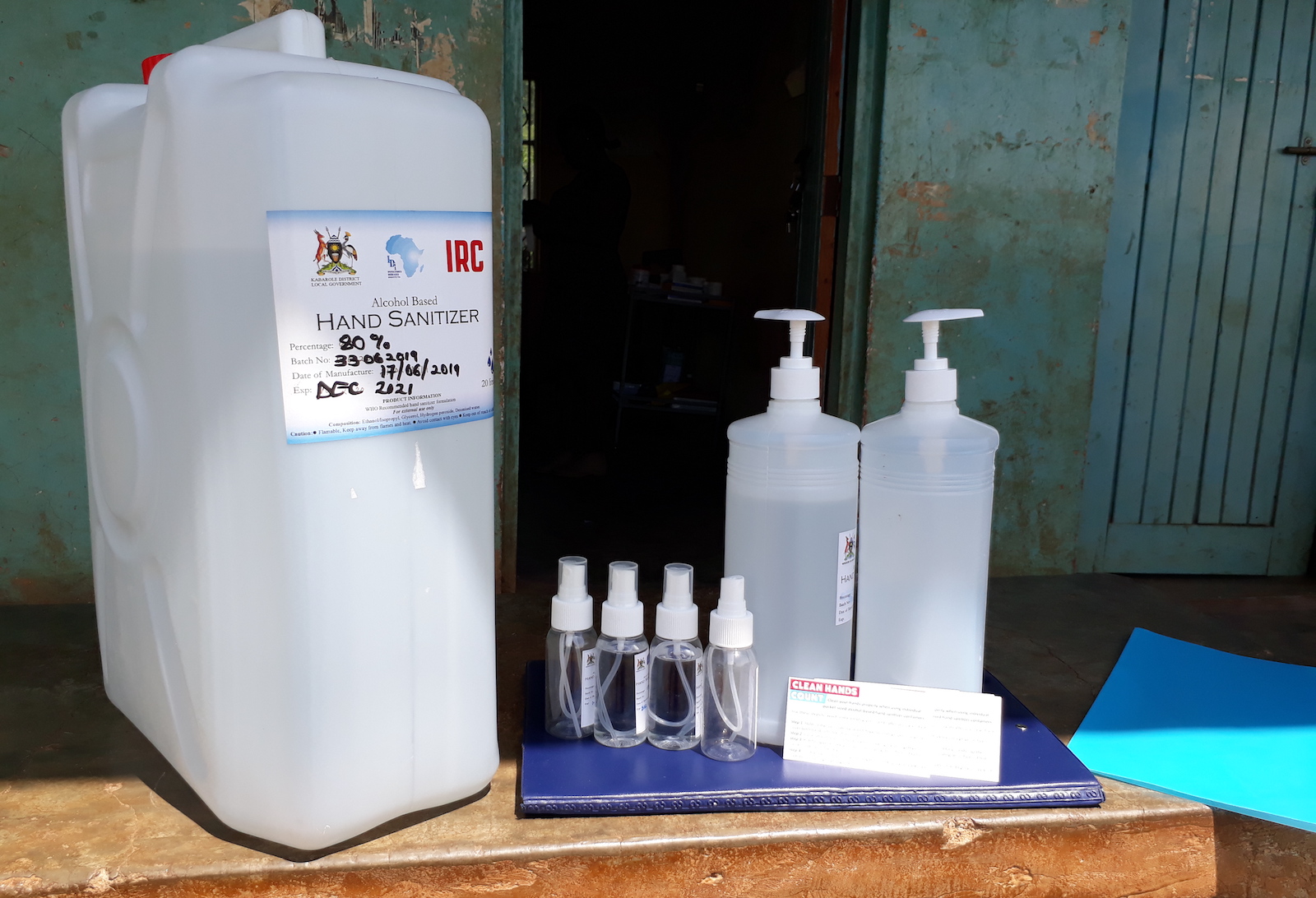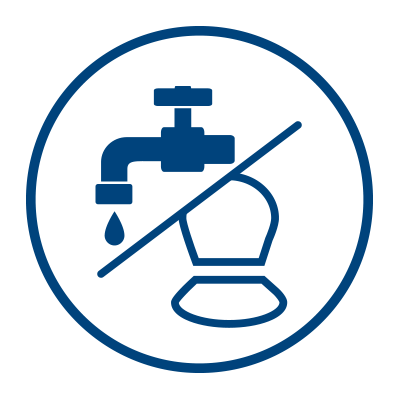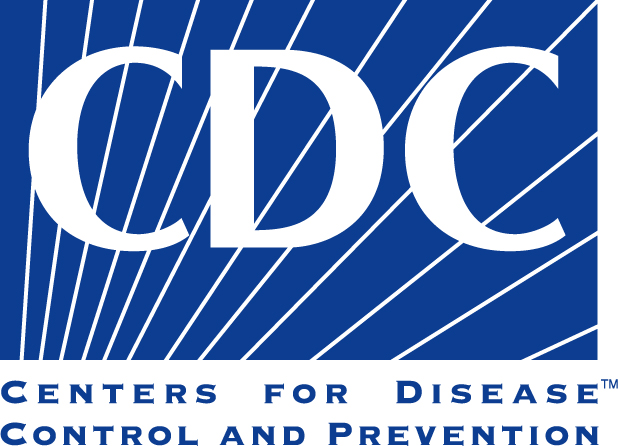Sustainable Solutions Improve Hand Hygiene among Health Care Workers

The Story
In 2018 and 2019, the CDC collaborated with the IDI of Makerere University, IRC-WASH, and a district government of Uganda to implement and evaluate the feasibility and impact of local production and district-wide distribution of ABHR on health care worker hand hygiene. This evaluation took place in Kabarole District in western Uganda, where CDC conducted a district-wide assessment of water, sanitation, and hygiene (WASH) in health care facilities in 2018 and found that access to water and soap was limited and health care worker hand hygiene compliance was very low.
During the one-year intervention, IDI helped produce and distribute locally made ABHR, CDC designed and led the monitoring and evaluation efforts, and IRC-WASH and the district government facilitated implementation. All 30 government health clinics received ABHR in the first or second phase of the program. Each month, evaluators checked availability, quality, and functionality of traditional soap and water handwashing stations. Alcohol concentrations of ABHR were monitored after production and at health care facilities several months after distribution. The program evaluated health care worker perceptions of the acceptability of ABHR and health care worker hand hygiene compliance three times: before, in the middle, and at the end of the program. Midway through the program, a neighboring district, Kasese, reported three people with Ebola who had crossed the border into Uganda from the Democratic Republic of the Congo. These first imported Ebola cases fueled Ebola preparedness efforts in Kabarole, which the hand hygiene program supported. Thus, in addition to a proof-of-concept evaluation, this program also provided critical hand hygiene materials to health care facilities during a high Ebola risk period.
Use of ABHR improved hand hygiene compliance among health care workers. Before the study, none of the observed health care workers practiced hand hygiene prior to contact with a patient and only 15 percent practiced it after patient contact. Midway through the study, at the height of the Ebola preparedness work, those numbers rose to 22 percent and 60 percent, respectively. At the end of the study, about 9 percent of health care workers practiced hand hygiene before patient contact and 41 percent performed it after patient contact, both significant increases over the pre-intervention rates. The quality (meaning the concentration of alcohol) of all ABHR at health care facilities was maintained over the study period. These results highlight that high-quality ABHR can be produced and distributed at a district level in a low-resource setting, which suggests it could be a useful component of health care hand hygiene programs in those settings. Focus group results suggested health care workers found it easier and more feasible to use ABHR when seeing large numbers of patients. Observational results, however, also showed worrisome lapses in health care worker hand hygiene, especially before patient contact. Handwashing stations with soap and clean water cannot be overlooked as a necessity to ensure health care facilities are functional, especially since ABHR does not kill all germs or work in all situations.
Thus, efforts to expand production and uses of ABHR will be most effective with ongoing, parallel investments to improve access to clean water for conventional soap and water systems for health workers’ hand hygiene.
In 2020, CDC continues to work with district governments and local partners to study and strengthen the ABHR program by integrating it into existing distribution systems and expanding it to neighboring Kasese District as part of Ebola-preparedness and health worker hand hygiene efforts.
Find More
Strategic Objective(S)
 Access to Safe Drinking Water and Sanitation
Access to Safe Drinking Water and Sanitation



Highlight